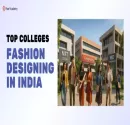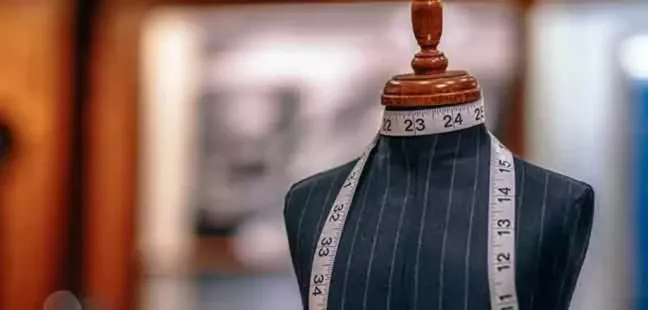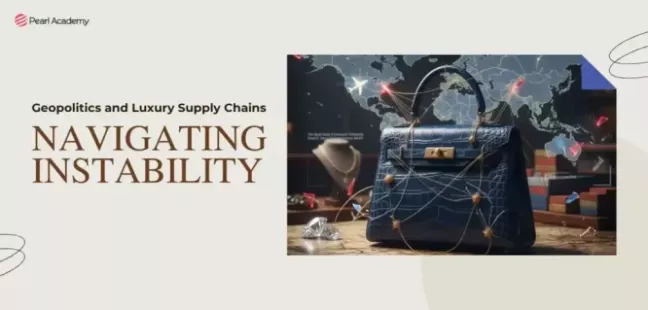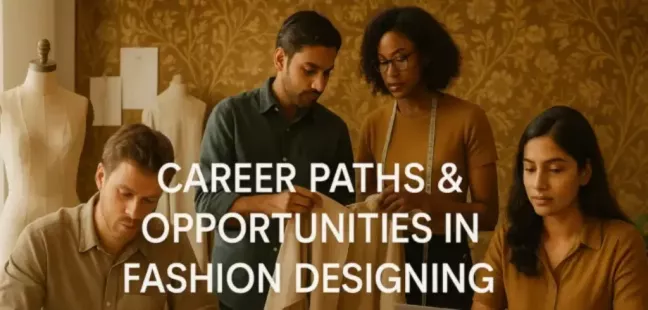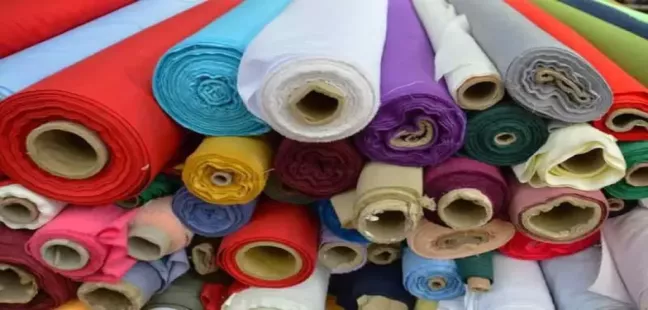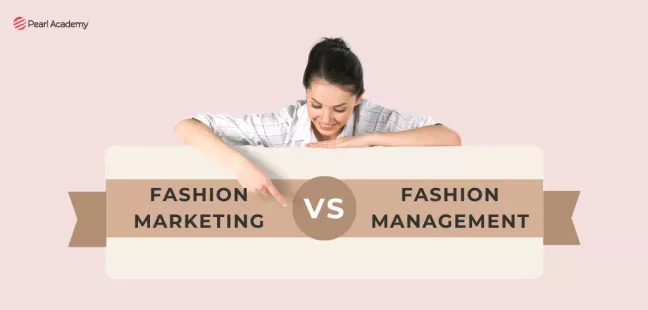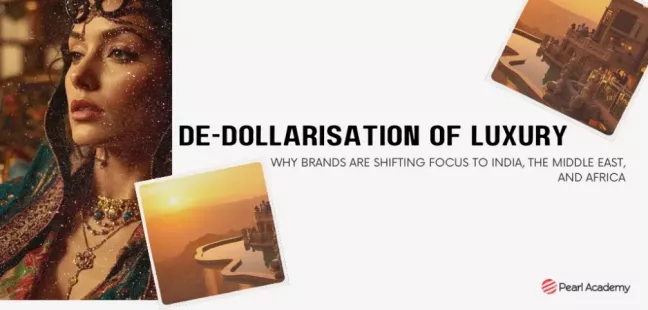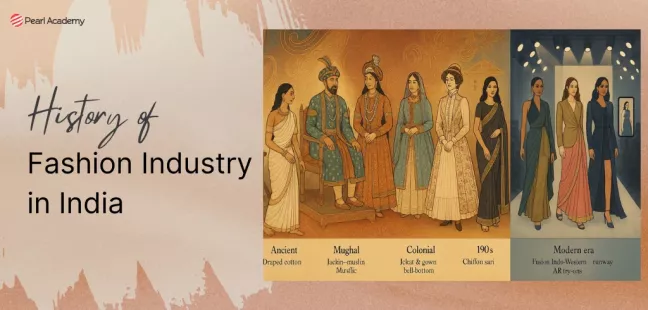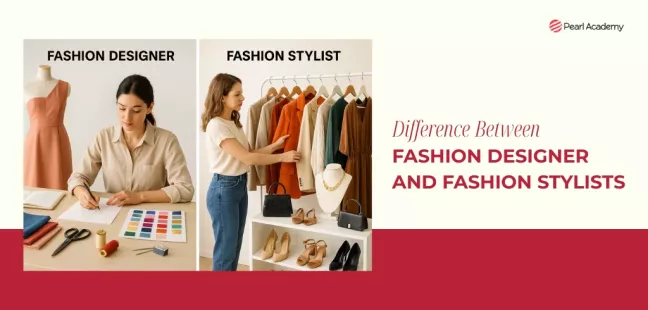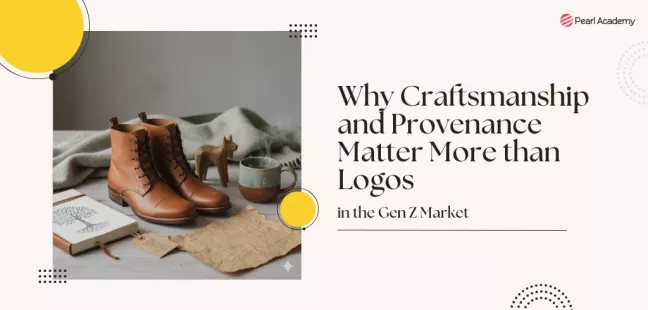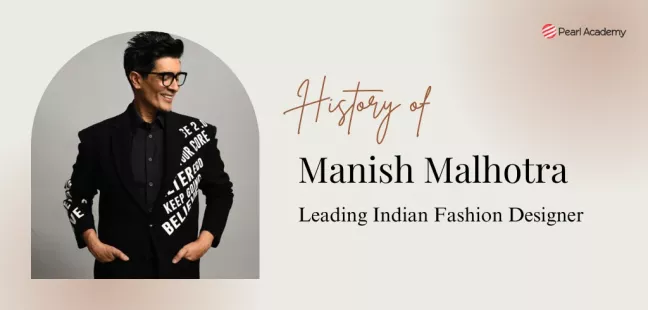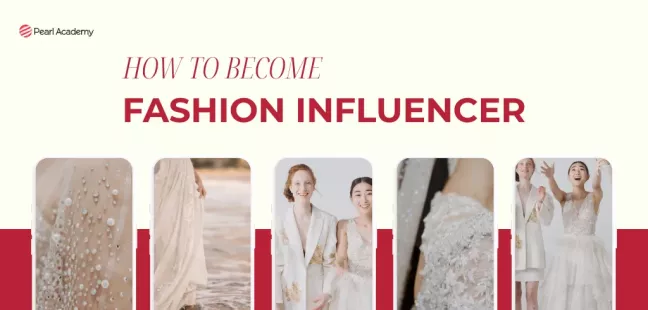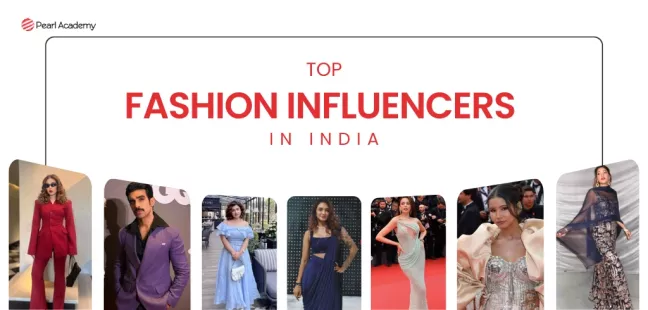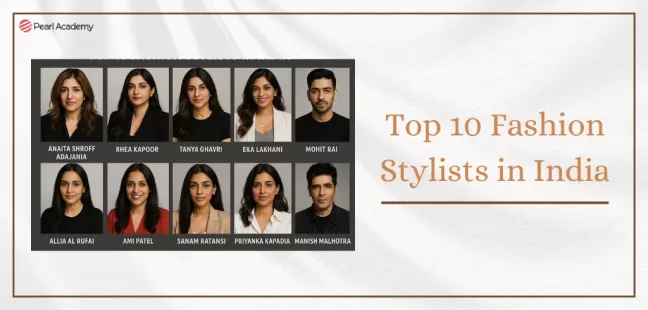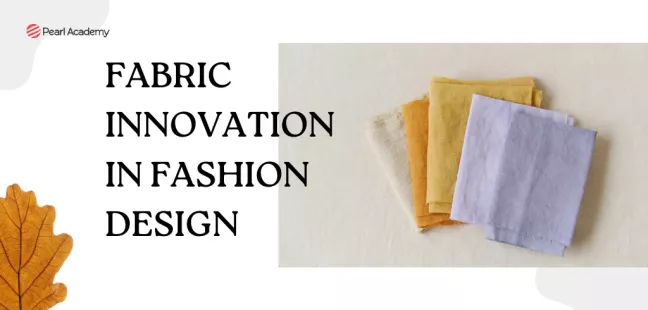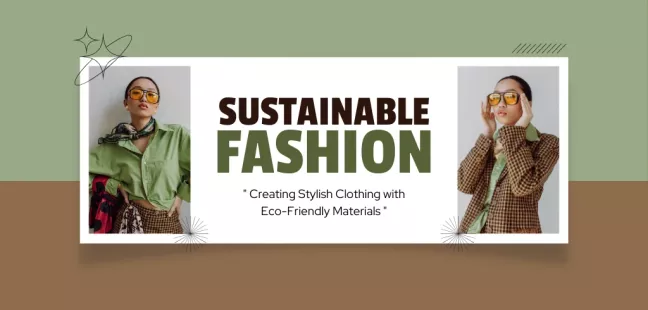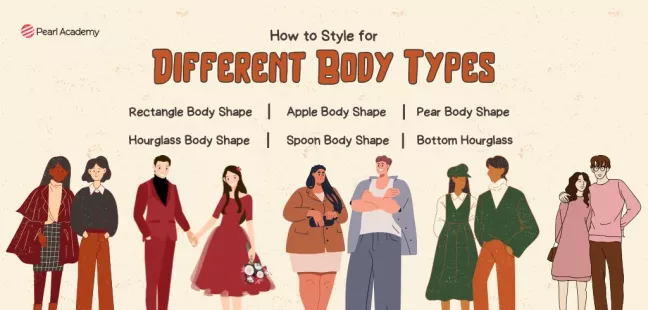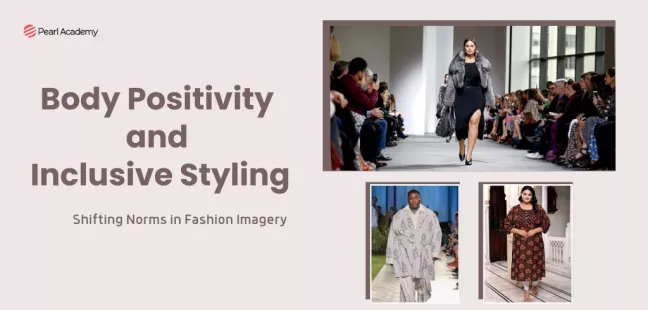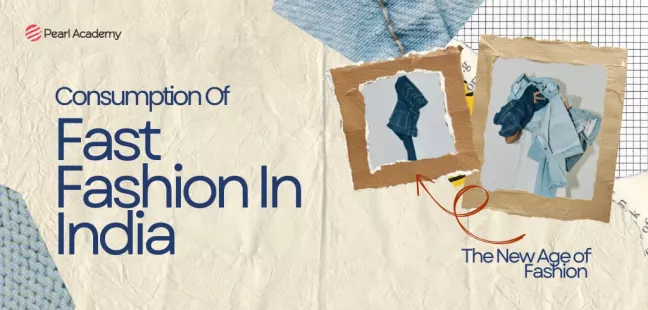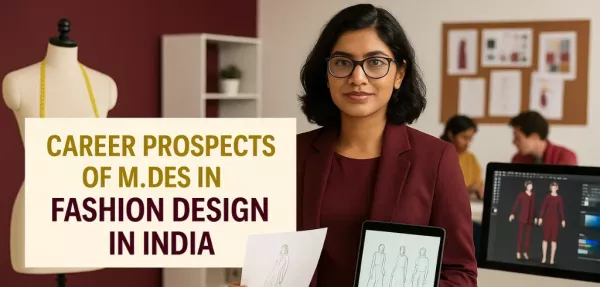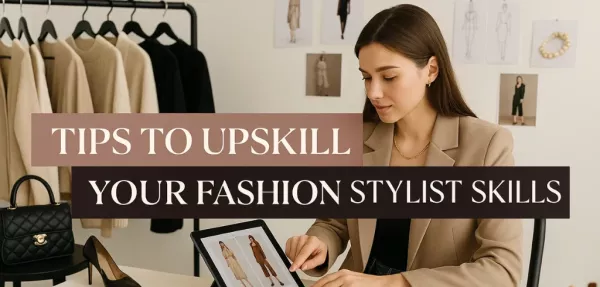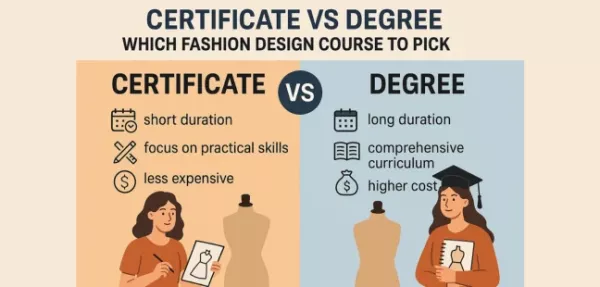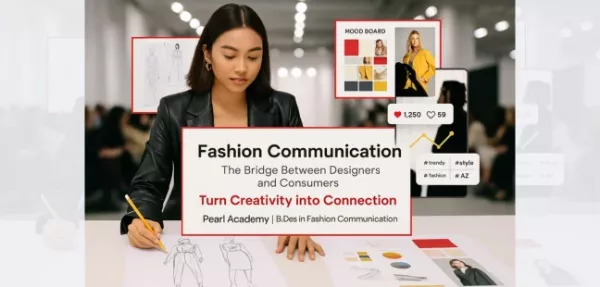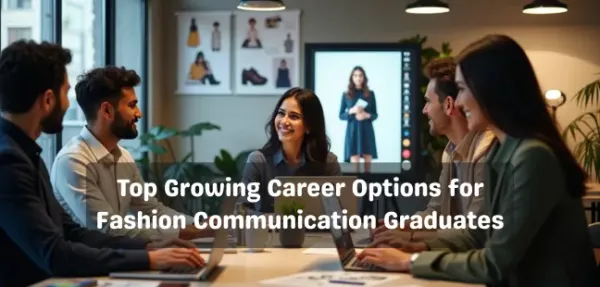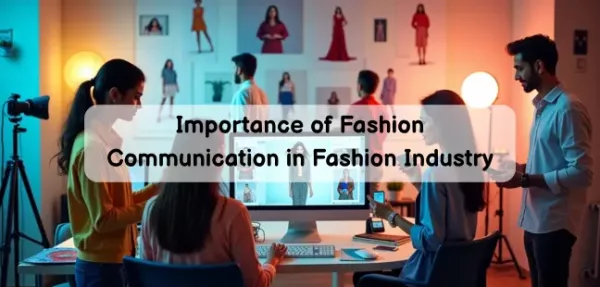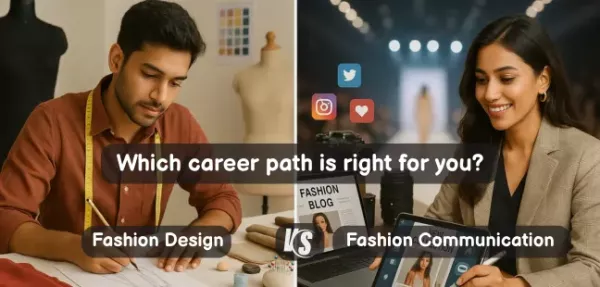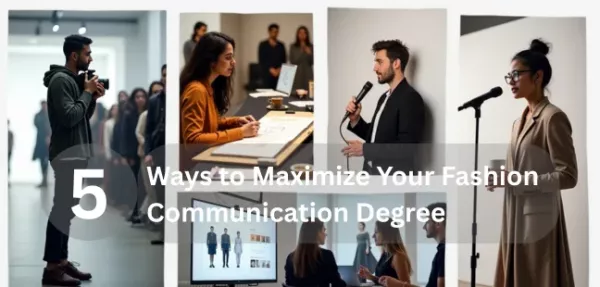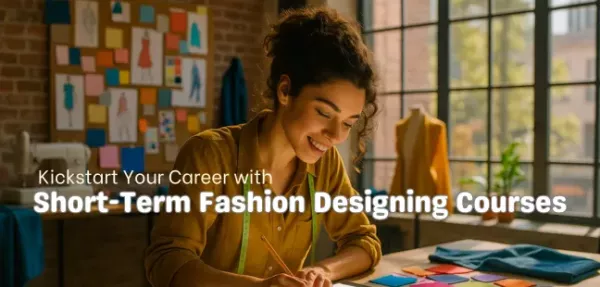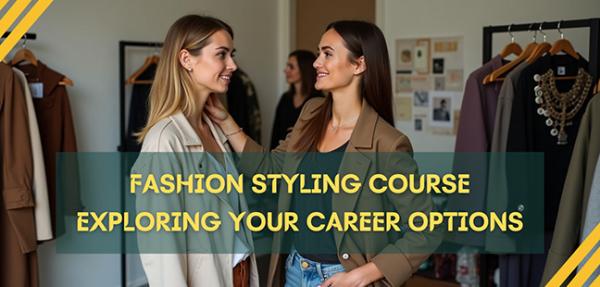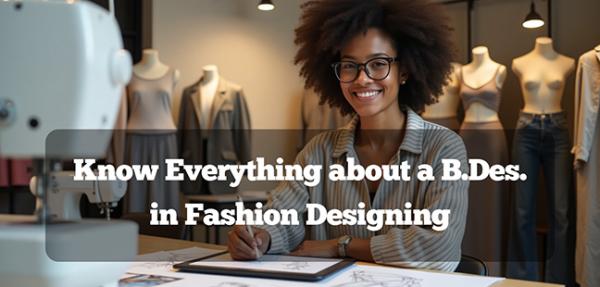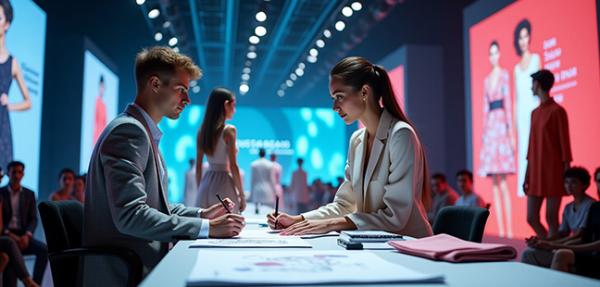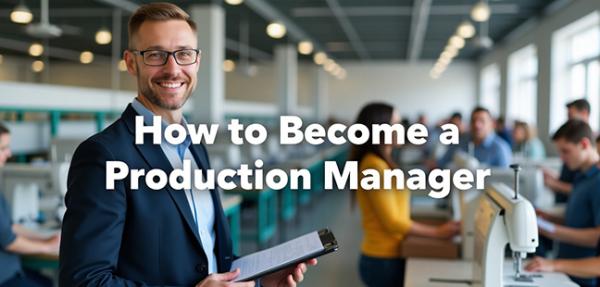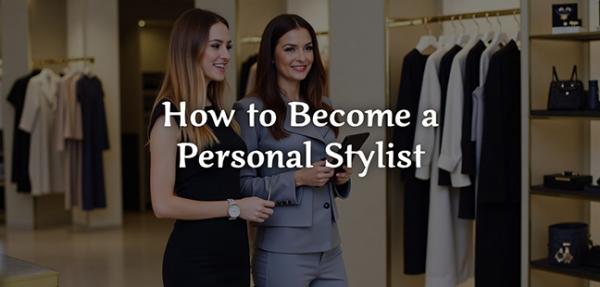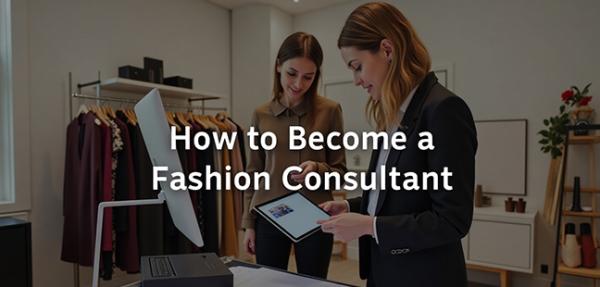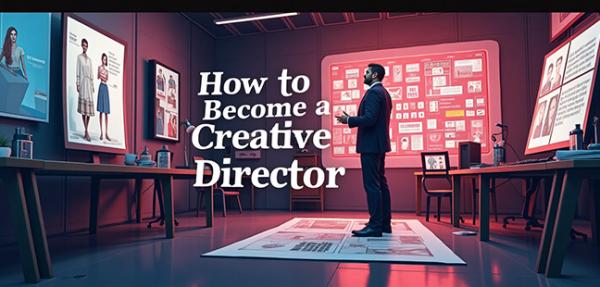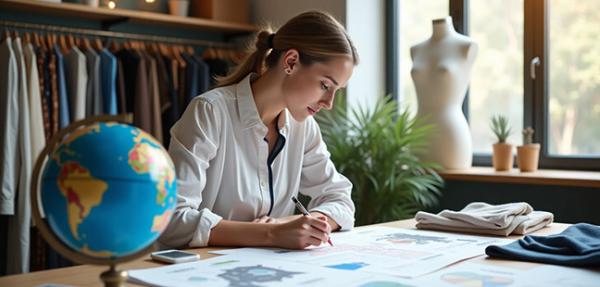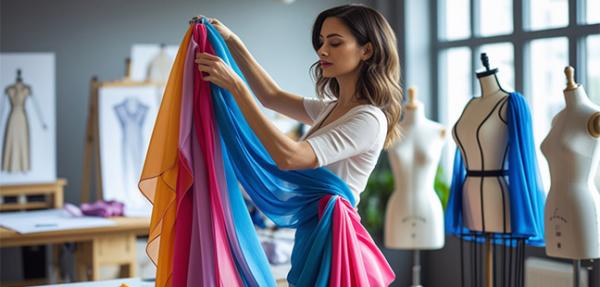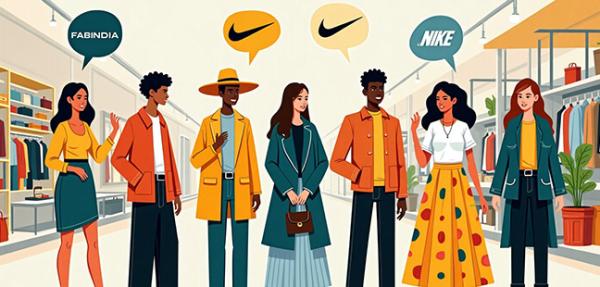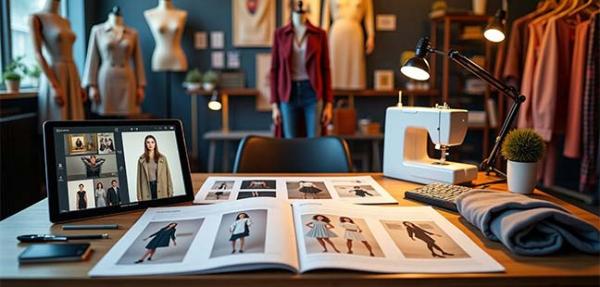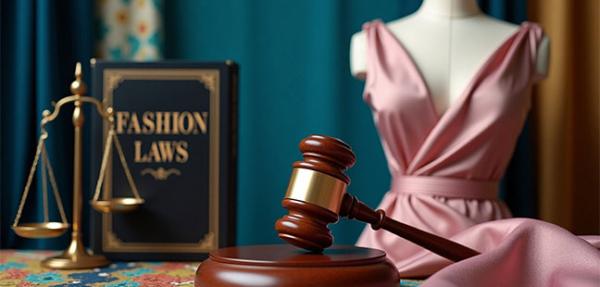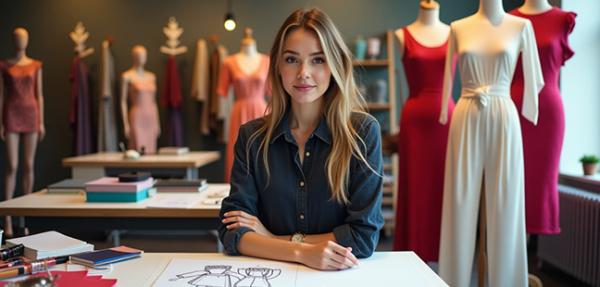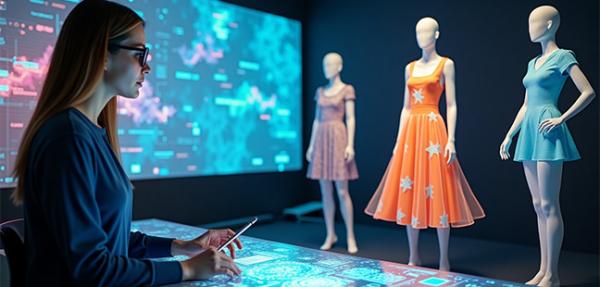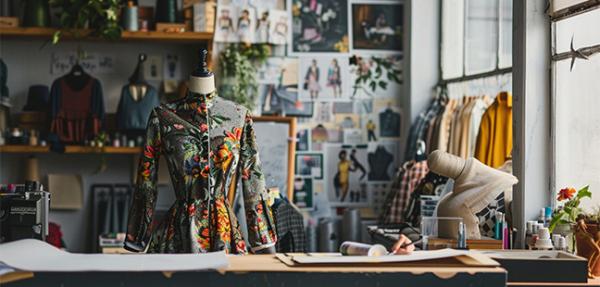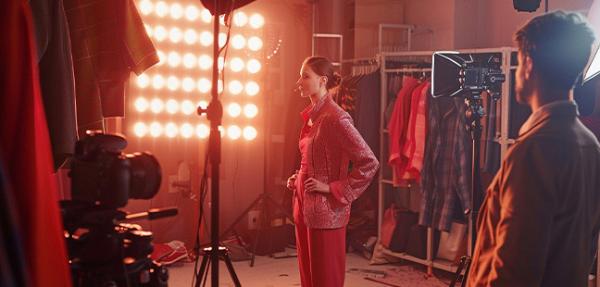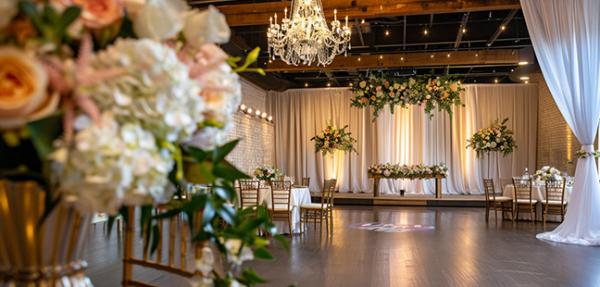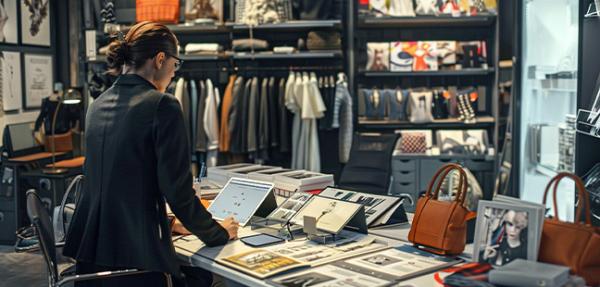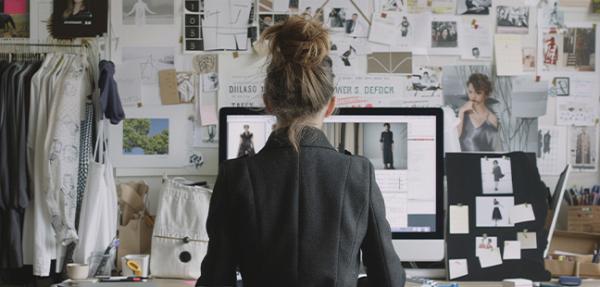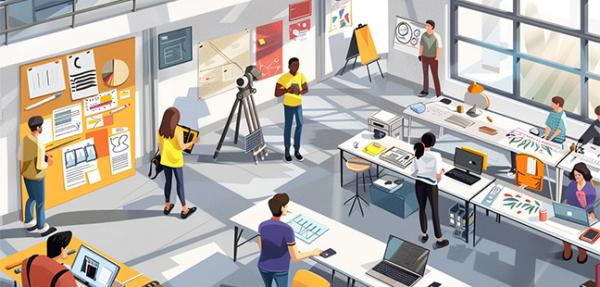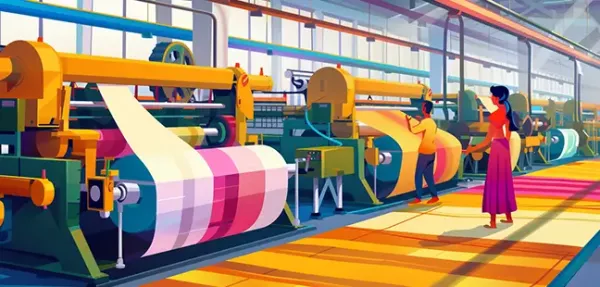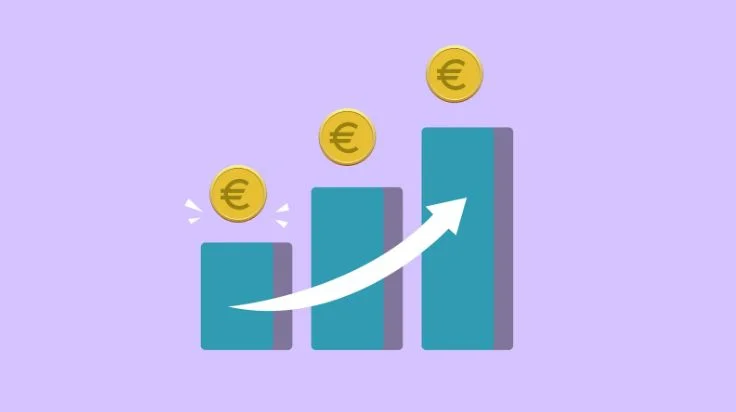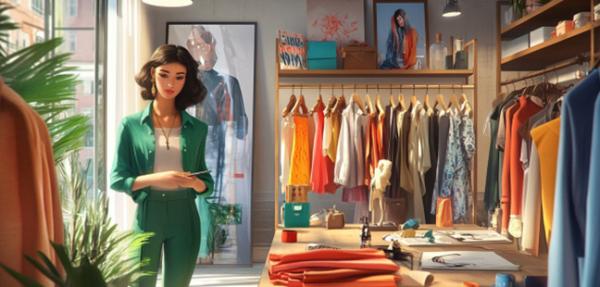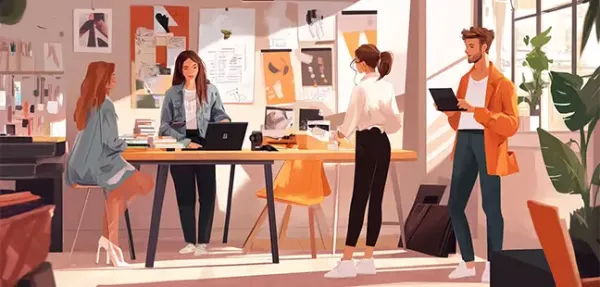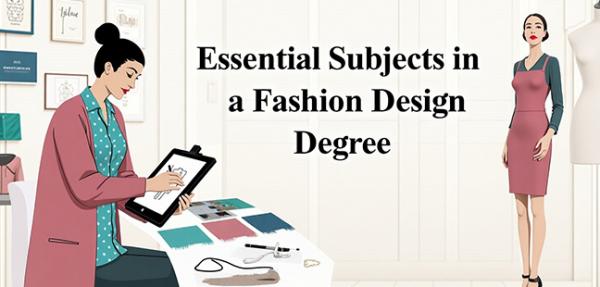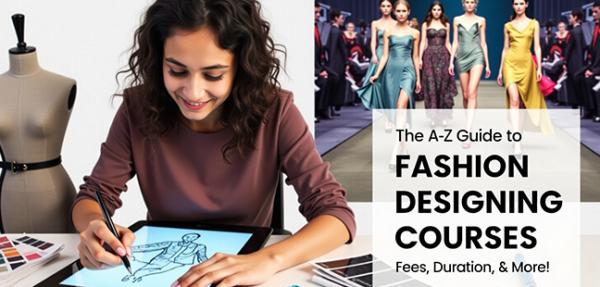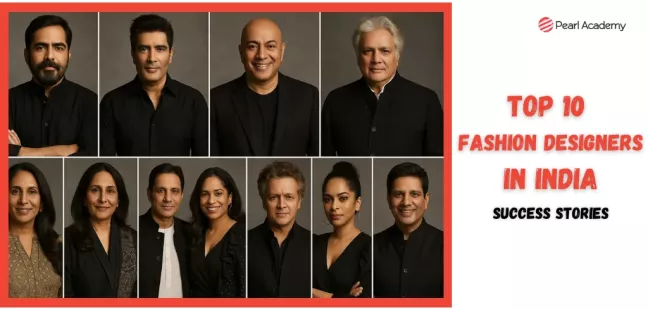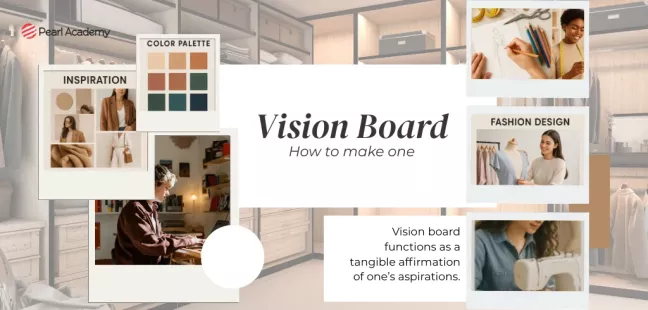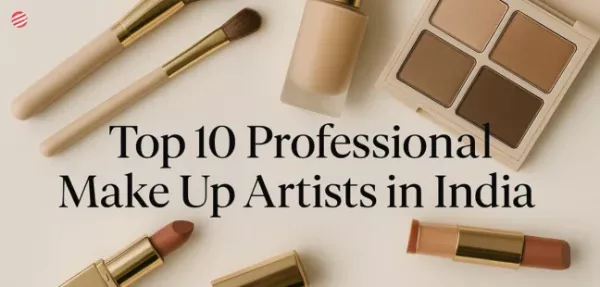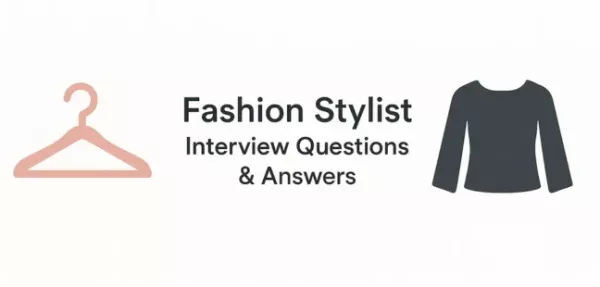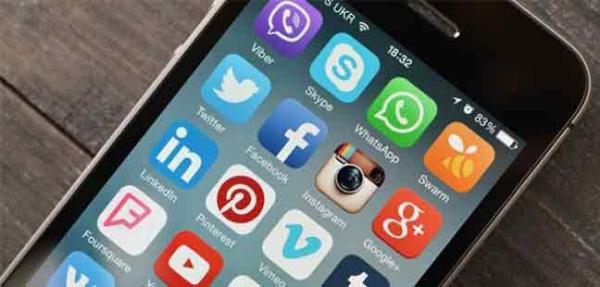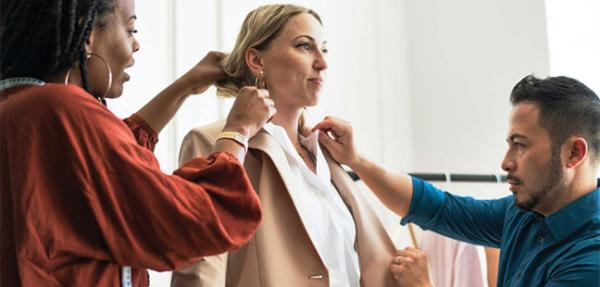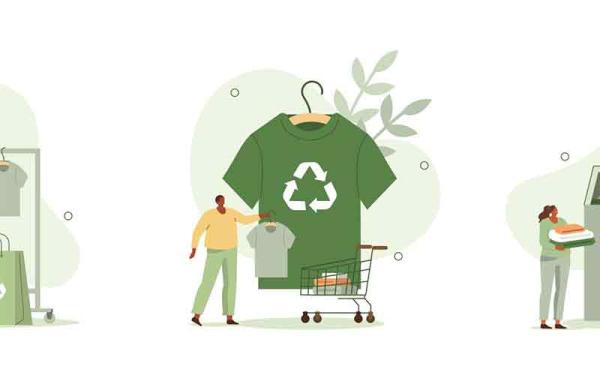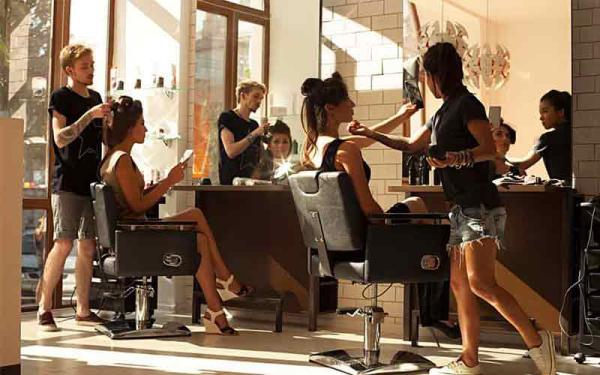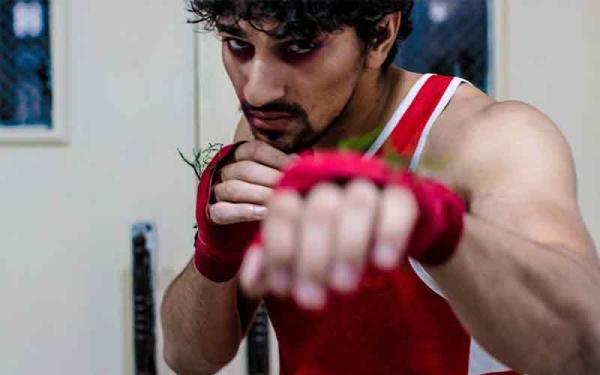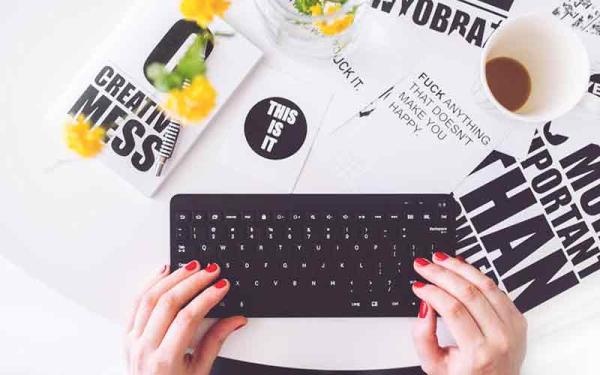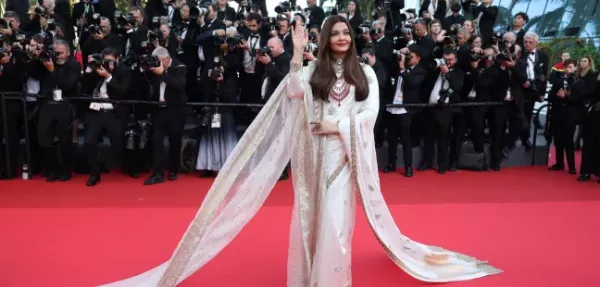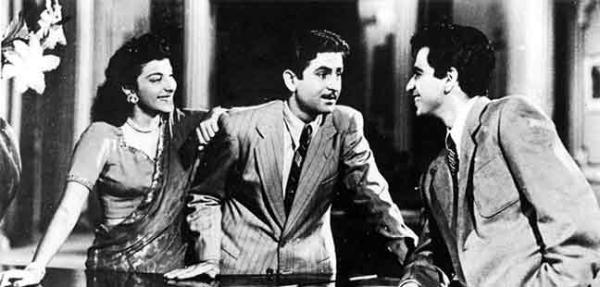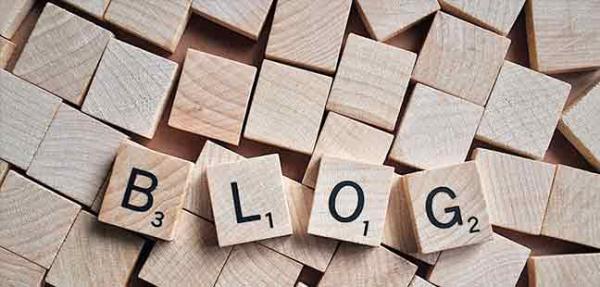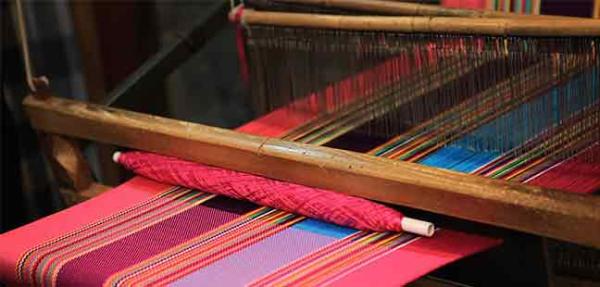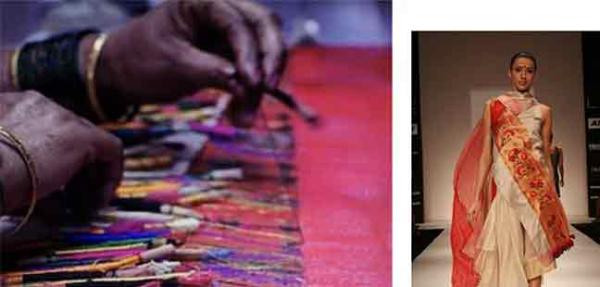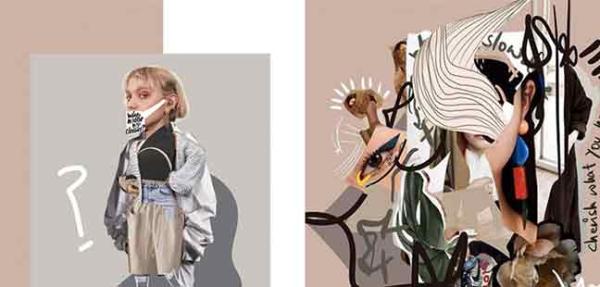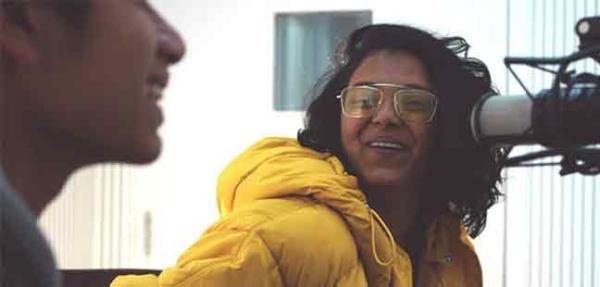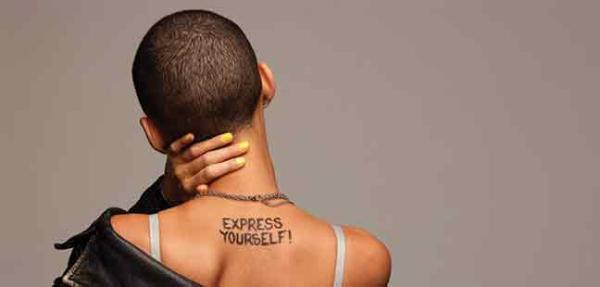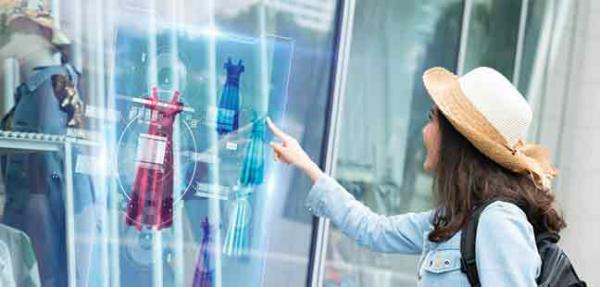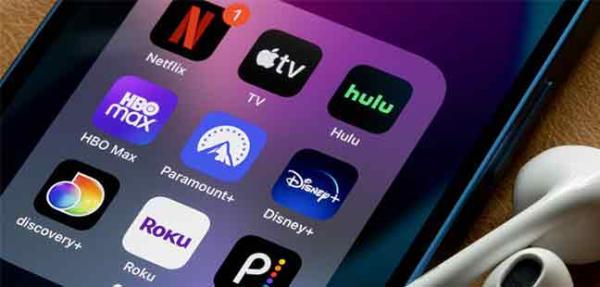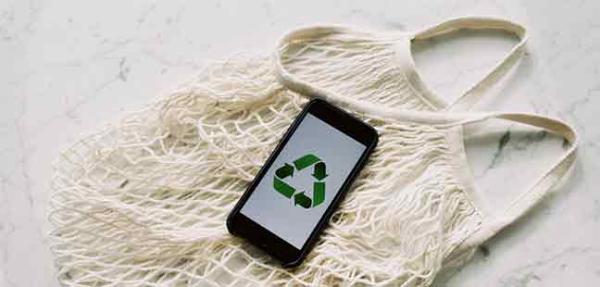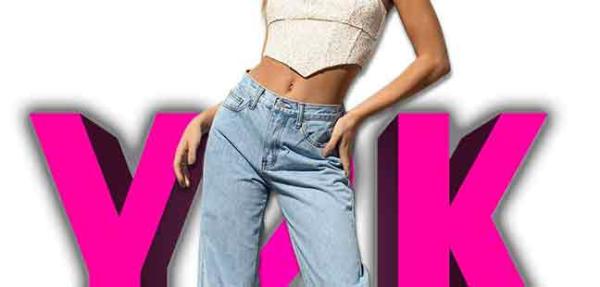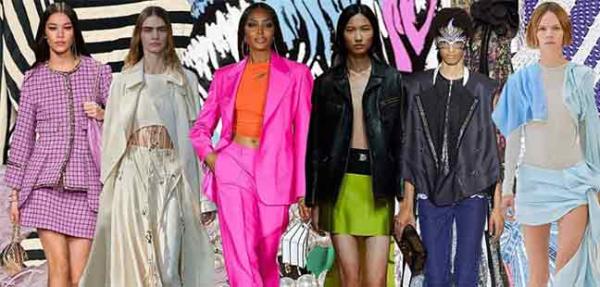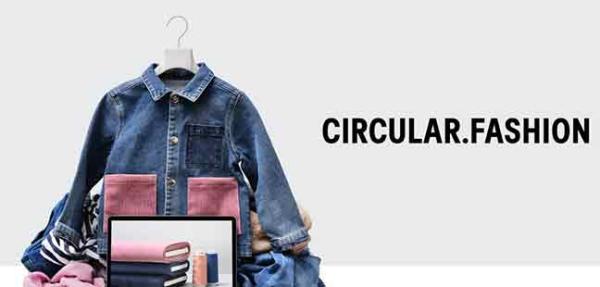Fashion Designer Interview Questions and Answers
- Editorial Team
- Published 14-Jun-2025
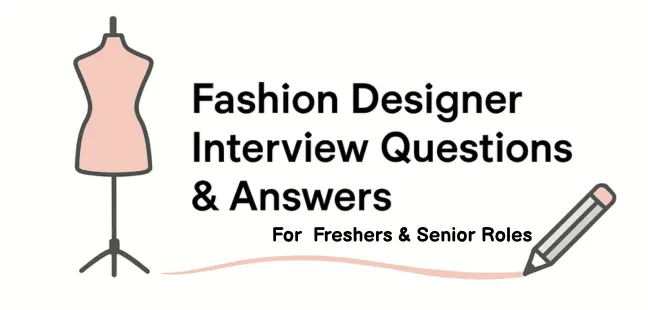
Imagine you are sitting outside the interview room of your dream company after completion of bachelor’s degree in fashion design, a degree you have put your soul and heart into, clutching tightly your resume file, but you are nervous and sweating profusely. While beside you, sits another candidate who’s calm, confident, and in control of his/her emotions. Unfortunately, he/she gets selected over you even when you are more qualified. Wouldn’t that be the worst nightmare coming alive?
The difference lies in preparation for the interview. A robust preparation composed of self-analysis, probable interview questions, and summary of projects and interviews undertaken can help you shine brighter than the others.
All fashion design enthusiasts, especially those in final year of their fashion design bachelor’s degree should give a thorough read to Fashion Designer Interview Questions and Answers, presented in this blog. Now that you will soon be sitting in front of interview board of your dream fashion companies, and labels, be prepared with Fashion Designer interview questions to ace the launching pad of your professional career.
Become future-ready with our Fashion Programs
Know MoreFashion Designer Interview Questions and Answers for Freshers
Whether you're applying for your first job or aiming for a senior designer role, acing the interview is essential. Here’s a comprehensive guide to the most commonly asked fashion designer interview questions, along with insights on why they are asked, how to answer them, and examples to help you prepare.
Question | Why it's asked | What they assess | How to answer | Sample Answer |
| 1. Why did you choose fashion designing as a career? | To understand your motivation and passion for the industry. | Genuine interest, commitment to the field. | Share a personal story or moment of inspiration. | “Growing up, I was always fascinated by how clothes can express identity. I remember redesigning my school uniform with accessories. That creative thrill made me choose fashion design as a career.” |
| 2. How do you stay updated with current fashion trends? | Shows your awareness of the industry. | Curiosity, research habits, industry engagement. | Mention magazines, influencers, shows, trend forecasting sites. | “I follow WGSN, Vogue Runway, and fashion influencers on Instagram. I also attend local fashion events and review seasonal collections to stay current.” |
| 3. Describe your design process. | To evaluate your creative workflow. | Technical knowledge, organization, creativity. | Explain from inspiration to final garment. | “I begin with research and mood boards, then move to sketching, fabric selection, pattern making, and finally sampling. I also iterate based on feedback.” |
| 4. What are your strengths as a fashion designer? | To identify your unique edge. | Self-awareness and fit for the role. | Link strengths to real examples. | “I have a strong eye for color coordination and storytelling through designs. During my college project, I themed a collection around sustainability, which received praise for coherence and aesthetic appeal.” |
| 5. Which fashion designer inspires you the most and why? | Reveals design aesthetics and vision. | Your design values and industry knowledge. | Name a designer and explain how they influence you. | “I admire Stella McCartney for pioneering sustainable luxury fashion. Her work shows how ethics and style can coexist.” |
| 6. How do you deal with creative blocks? | To test your resilience and creativity under pressure. | Problem-solving skills. | Share real strategies like sketching, breaks, or collaboration. | “I take a short break, revisit mood boards, or discuss ideas with peers. Sometimes stepping away helps spark a new direction.” |
| 7. What tools and software do you use for designing? | Tests technical readiness. | Hands-on skills and adaptability. | List industry-standard software. | “I’m proficient in Adobe Illustrator, Photoshop, and CLO 3D. I also use Canva and Procreate for quick visualizations.” |
| 8. How do you ensure your designs are both creative and functional? | Assesses design practicality. | Balance of aesthetics and wearability. | Give an example of a design that achieved both. | “For a college show, I created convertible jackets that were stylish yet functional with hidden pockets and weather-adaptable fabric.” |
| 9. Describe a fashion collection you’ve worked on. | To evaluate your end-to-end understanding. | Conceptualization and execution skills. | Walk them through theme, execution, and outcome. | “My final year collection, ‘Roots Reimagined,’ was inspired by Indian tribal motifs. I used handlooms and sustainable dyeing to create modern silhouettes rooted in tradition.” |
| 10. How do you handle feedback or criticism on your designs? | To assess emotional intelligence. | Openness, teamwork, growth mindset. | Show maturity and improvement. | “I take it constructively. In my internship, a mentor suggested revisiting fabric layering—I did, and the outcome improved significantly.” |
| 11. What is your understanding of sustainable fashion? | Sustainability is a growing focus. | Awareness of trends, responsibility. | Reflect knowledge and implementation. | “It means using eco-friendly materials, ethical production, and circular design. I’ve used organic cotton and natural dyes in my student projects.” |
| 12. What fashion shows or trends have caught your attention recently? | To evaluate industry involvement. | Trend knowledge and critique. | Reference a show and analyze it. | “I loved Dior’s Fall collection for its gender-fluid styles. It combined heritage cuts with modern streetwear appeal.” |
| 13. How do you handle tight deadlines or last-minute changes? | To check your work ethic and adaptability. | Time management and composure. | Share an example with positive outcome. | “During a fashion week trial, we had to alter garments 2 days before the show. I reprioritized tasks, delegated finishing work, and we met the deadline.” |
| 14. How do you visualize your growth in the next 5 years? | To understand ambition and fit. | Long-term potential. | Align goals with company’s direction. | “I see myself leading my own fashion line or heading a design team that champions ethical fashion.” |
| 15. Why should we hire you over other candidates? | Final self-pitch. | Confidence and clarity. | Show unique value and skills. | “I bring a mix of creativity, hands-on technical skills, and a hunger to learn. My academic grounding at Pearl Academy and my focus on innovation sets me apart.” |
Whether you’re preparing for your first job or aiming to level up, knowing the fashion designer interview questions that hiring managers commonly ask can give you a significant edge.
Anyone who’s reading this and feel a pull to the world of fashion but don’t know how to carve a place for yourself in the huge world of fashion, can check our blog on How to become a Fashion Designer.
Senior Fashion Designer Interview Questions (With Sample Answers)
For mid-to-senior roles, fashion designer interviews go beyond creativity. They assess leadership, business acumen, and strategic thinking. Here are essential interview questions for senior fashion designer roles, including how to approach and answer them.
Question | Why it’s asked | What they assess | How to answer | Sample Answer |
| 1. How do you manage a team of designers? | To assess your leadership and delegation skills. | Team management, collaboration, ability to mentor. | Share how you align individual strengths with project goals and foster creativity. | “I assign roles based on each designer’s strengths—some excel at prints, others at draping. I schedule regular check-ins, use collaborative tools like Trello, and maintain an open-door policy to ensure everyone feels heard and motivated.” |
| 2. Describe a time you resolved a conflict within your team. | To understand how you handle interpersonal challenges. | Emotional intelligence, communication, problem-solving. | Use the STAR method (Situation, Task, Action, Result). | “Two designers disagreed on fabric sourcing for a high-stakes show. I mediated a joint session where each presented pros and cons of their choice. Eventually, they merged their ideas into a layered concept that got featured in a fashion blog.” |
| 3. How do you balance creativity with commercial viability? | To assess your ability to design for market needs. | Business sense, customer focus, strategic thinking. | Explain how you study market trends, pricing, and production while keeping the design vision intact. | “I start by defining the customer persona. While ideating, I consider both aesthetic appeal and production costs. For example, I once replaced hand embroidery with machine-aided stitching to maintain the look and cut costs by 40%.” |
| 4. Have you ever launched a collection? How did it perform? | To assess your execution and result-oriented mindset. | End-to-end management skills, creativity, commercial results. | Share metrics (sales, PR coverage), timelines, and any innovative strategies you used. | “Yes, I led the launch of a resort-wear collection titled ‘Azure Coast’. We sold out 80% of inventory in 2 months, secured a feature in Femina, and increased our online engagement by 50% through a targeted Instagram campaign.” |
| 5. How do you stay updated with global fashion trends? | To ensure you’re relevant and globally aware. | Trend forecasting ability, market insight. | Mention tools like WGSN, international fashion weeks, social media, and competitor tracking. | “I regularly review trend forecasting reports from WGSN and attend Paris and Milan Fashion Week (virtually or in person). I also track key influencers and monitor competitor lines to anticipate shifts in silhouettes, fabrics, and color stories.” |
| 6. What is your experience with fashion budgeting and pricing? | To evaluate financial literacy in design. | Cost control, profitability, pricing strategy. | Mention cost breakdowns, vendor negotiations, and aligning price points with target markets. | “For every collection, I work with the finance team to set fabric, labor, and marketing budgets. I once reworked the pricing strategy for a line that was underperforming by offering bundle discounts and limited editions—this boosted our sales by 30%.” |
| 7. How do you ensure sustainability in your collections? | Sustainability is a priority in fashion today. | Awareness of eco-friendly practices, innovation. | Discuss fabrics, processes, ethical sourcing, and waste management. | “We introduced zero-waste patterns and sourced organic cotton from certified suppliers for our loungewear line. I also worked with artisans using natural dyes and biodegradable packaging.” |
| 8. How do you handle creative differences with brand stakeholders or clients? | To test your client-facing and negotiation skills. | Flexibility, professionalism, diplomacy. | Emphasize listening, proposing alternatives, and finding common ground. | “Once, a client insisted on a silhouette that didn’t suit the fabric’s fall. I demonstrated prototypes and explained the limitations. We agreed on a hybrid solution that preserved their vision while maintaining design integrity.” |
| 9. What KPIs do you track to measure a collection’s success? | To determine if you think strategically post-launch. | Analytical mindset, business focus. | Mention KPIs like sell-through rate, customer feedback, press coverage, and social media engagement. | “I track sell-through rate, online conversion rate, and repeat purchase metrics. Our capsule collection for Winter 2023 had a 72% sell-through in 45 days and over 10k Instagram shares in a week.” |
| 10. What’s your leadership style as a senior designer? | To evaluate your fit within the company culture. | Self-awareness, collaboration, team building. | Explain your approach with a leadership philosophy. | “I follow a collaborative leadership style—I guide rather than instruct. I encourage juniors to experiment, offer timely feedback, and ensure credit is given where due.” |
Why Do Fashion Designer Interviews Matter?
Fashion design is not just about sketching or styling; it's about conceptual thinking, understanding trends, and executing ideas into wearable art. Top recruiters seek creative minds with technical skills and personality. That’s why preparing for the right fashion designer job interview questions and answers is essential.
Pro Tips to Ace Your Fashion Designer Interview
Whether you’re answering technical fashion designer interview questions or showcasing your creative flair, these practical tips can set you apart in a competitive industry:
1. Start with research, not your resume.
Seriously. Before you even think about what to wear or which designs to show, take time to really understand the brand. Who are their clients? What’s their design language—bohemian, avant-garde, luxe minimalism? Do they stand for something—like sustainability or inclusivity? When you’re asked, “What do you like about our brand?” (and you will be), don’t give a generic answer. Show them you’ve done your homework. That’s how you stand out.
2. Dress like you’re already part of the team
Fashion is visual. Your outfit is your elevator pitch. But don’t overdo it. The goal is to look like someone who fits the brand, not someone trying too hard. If you’re interviewing at a contemporary ethnic wear label, maybe pair a linen kurta with clean sneakers. If it’s a streetwear brand, show your edge but keep it clean. You're not just answering interview fashion designer questions—you're living them.
3. Let your portfolio do the talking—beautifully
Yes, they’ll ask questions. But often, your visual work will speak louder. Curate a portfolio that tells a story—not just final garments, but your thought process: moodboards, fabric swatches, design evolution, maybe even photos of fittings or feedback loops. Tailor your selection to the company you’re interviewing with. And please—don’t bring everything you’ve ever made. Highlight 3–4 pieces that truly show your range and identity.
4. Talk like a designer, not a robot
Whether you're a fresher or a senior designer, confident communication is key. Many candidates stumble not because of poor answers, but because they don’t own their story. Practice talking about your inspirations, your process, even the toughest project you’ve handled. Interviews will often include questions like, “Tell us about a challenging brief” or “How do you incorporate feedback into your work?” Make sure your answers sound like you—clear, authentic, and rooted in real experience.
5. And finally—carry your curiosity
This isn’t a one-way street. The best interviews are conversations. Ask about their upcoming collections, their thoughts on AI in design, or even how their design teams collaborate. Thoughtful, open-ended questions to ask a fashion designer during an interview show that you’re not just there for a job—you’re there to grow.
Bonus Tip: Align Passion with Professionalism Hiring managers love to see passion—but they also value professionalism. Be on time, carry a printed resume, and ask smart interview questions to ask a fashion designer (like “How do you define success in your design team?”). It reflects initiative and genuine interest.
Start Your Journey with the Right Degree
Before diving into the interview stage, having a strong academic foundation helps. Pearl Academy offers two robust programs to shape your career:
B.Des in Fashion Design: Ideal for freshers looking to break into the industry with strong design fundamentals and industry exposure.
M.Des in Fashion Design: Perfect for those who want to upgrade their skills or shift their career towards fashion innovation and leadership.
To discover further the fashion designing courses after 12th.

Student Guidance Center: Our Counselors are Just a Click Away.
Conclusion
Whether you’re applying as a fresher or aiming for a senior position, these fashion designer interview questions and answers will help you face any interview confidently. And remember, your academic foundation matters. A reputed institute like Pearl Academy can give you the edge with real-world exposure, global collaborations, and industry-oriented curriculums.
Dreaming of becoming the next big name in fashion? Start preparing today—your breakthrough is just an interview away.
More Interview Prep Guides You’ll Find Helpful
Tags
- #Fashion
Pearl Admission Enquiry
Subscribe to Pearl Blogs
By clicking the "Subscribe" button, I agree and accept the privacy policy of Pearl Academy.






